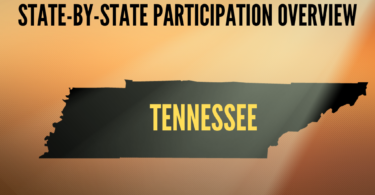You know what it’s like. You’ve spent forever shopping only to end up with a few items you’re not even sure you want. You do that when you start off without knowing what you are looking for. It’s the same thing searching for a college baseball team. When you know what kind of team you’re looking for, searching for a college program is much more fun. Try these five steps to narrow down what you are looking for and find your team.
1. Decide what you’re looking for.
Your skill level, grades, and test scores will influence where you should apply and what schools you should contact. But, you should also think about what you want out of your college experience. Think hard about what you want. That’s when you can use your priorities to narrow your search for programs that fit. This will make the whole process more manageable. Before looking at specific schools, decide what characteristics about your future school are important to you. Consider the division, major/area of study, cost, location, campus size, diversity, close to home, ability to play as a freshman, etc. Use this worksheet to help make a list of important characteristics, and then organize your list so the most important ones are on the top. Save your list; you’ll be using it later.
“I was looking for academics first, but then I would look at the rosters to see how many infielders were leaving in the next year. I was looking to go D1. I tried to shoot for that goal. I was looking for the best opportunity to play while keeping academics as my top priority.” – Justin Andrade, Infielder, UC Davis (2010-2011)
2. Take an objective look at yourself.
Academics and baseball skill set will be the two criteria that determine the schools where you have a realistic chance of playing. For example, if your test scores and GPA are below average, playing for an Ivy League school isn’t going to happen. The NCAA has specific rules that describe the classes and GPA-level needed to play at each division. You can see those rules by clicking here. You can look here to see what has changed due to COVID-19. School admission websites and college search engines also have school-specific information. Keep in mind that getting the minimum GPA and test scores may not be enough to get into highly competitive schools.
“The most important thing is to be objective with yourself. Look at the people you’re playing against and think, ‘Do I stand out?’ And if you do, don’t be pompous or arrogant about it, but ask your coach or someone you trust, ‘Do I have a chance if I keep working? If I keep doing what I’m doing and I grow into my body, do you think I can contribute somewhere?’’ – D1 Infielder, California
You may need help figuring out which baseball division or programs match your skill level. Find someone you trust who can tell you objectively which division is appropriate for your skill level. Scouts and coaches are often able to help. But, it is most important to find someone knowledgeable who will be honest and unbiased in their evaluation of your skills. If you don’t like what they say, use their feedback to inform your skill development in the areas where you are coming up short. We discuss the process of seeking honest and objective information and why it’s important for recruitment and development at length here.
3. Match up your skills and academics with schools that meet your top criteria.
The next thing to ask yourself is whether or not the schools that meet your listed criteria are realistic. Is the program a match based on your grades, test scores, and an objective evaluation of your skill level. You need to be brutally honest here. It’s okay to have a dream school or two. And, by no means are we telling you to give up on making your dream a reality. However, it is important that you have a backup plan and to be realistic about your chances for playing and getting admitted.
Sometimes it is a matter of just readjusting your expectations or having a better understanding of what other options are available to you. There are plenty of great college baseball opportunities for players of all athletic and academic abilities. With this in mind, let’s see what we can do about making your list of characteristics match up with schools given academic and athletic constraints.
If your academics are holding you back, you have several options. When you have the time before you graduate, you could retake courses and tests or take summer school classes. If you don’t have enough time left to improve your academic record or test scores, you can lower your expectations and consider a school with easier admission requirements, or you can attend a community college. While the last option may not be appealing to you, many college-bound baseball players have taken that path and had tremendous success (ever heard of Albert Pujols or Jake Arrieta?).
Opportunities
By doing well at a community college, you have another chance at earning a scholarship. You’ll be able to choose from a wider selection of four-year schools. And, also have the opportunity to transfer to any of the NCAA divisions if you take care of school work, not to mention the opportunity to be drafter each year. Check out our 4-part mini-series on community college (JUCO) baseball to see why it can be a great option for all different kinds of players.
If your athletic performance is limiting your options, then your options will depend on your age. If you have started your college search a few years early, you still have time to get bigger, stronger, and more mature. You’ll be able to seek additional coaching and playing opportunities. However, if you are graduating and haven’t had the playing opportunities or on-field success that you hoped, you may have to lower your expectations. You may have to look for a school with a level of baseball that better fits your ability. There are plenty of coaches who are happy to give you a shot at playing college baseball. That’s true, even if you were not a high school standout. The opportunity to keep playing will give you more time to mature as a player. You’ll be able to work on areas of your game that are weak.
D1 isn’t the only place to play
“I wanted to play D1 baseball my entire life. I didn’t even know any other level existed. When I wasn’t getting the D1 scholarship offers I thought I would, I had to change my expectations. I decided to go to a D3 school and try to transfer (before the rules changed to make players sit out). It took some adjustments but I ended up loving school and baseball there and stayed 4 years. After college, I spent 2 seasons as an import player in Belgium and Australia. Now that I am coaching at a D1 school, I realize that a lot of the same opportunities exist at smaller schools if you pursue them and make the most of your opportunities.” –Ethan Guevin, Pitcher, Carleton (2005-2009)
4. Get organized, and get the details!
By now, you may have already found several schools that match your criteria and interest you. If not, there are search engines that allow you to locate schools according to your specific characteristics. Others allow you to search according to everything from location and cost to a particular division of baseball. For example Big Future is a free college search run by College Board, the people in charge of the SAT. You can create an account and save your results and see how you “match up” with the student body at a certain school. You’ll see whether you are “on track” with requirements to attend a particular school, and many other great features.
Get started finding schools by clicking here.
You can use the list you made in step one to help you get started. If you don’t want to use an online tool, get a notebook or binder so you can keep all the detailed information together. Make sure to pick a couple of schools to be part of your back-up plan in case your first choice doesn’t work out.
“Even though this is all focused on baseball, you can’t get wrapped up in that. You’ve got to look past that. You gotta think about it. Is it going to be somewhere where I can do something with my degree? Am I going to build connections so that I can go further? What are my other aspirations besides getting to play college baseball? There is some point where, for most people, it does end. You have to be happy with where you’re at when that time comes.” – D1 Pitcher, California
5. Create a recruiting video and start contacting schools.
Find schools that match the qualities you are looking for in a college and baseball playing experience. Once you know you are competitive with the baseball skill set required of that program, you are ready to begin contacting the schools and seeking exposure. Start by creating your own skills video. Videos provide coaches at programs of interest an easy way to get an initial evaluation of your ability. Use our free online course to learn how to create a successful video. Then, use email and social media to get it in the hands of coaches.
We suggest using a 20/65/15 split for reaching out to schools. 20% of schools on your list should be places where you are very confident you fit academically and athletically. These are often considered “safety schools” or backup options. 65% of school you reach out to should be schools you feel fit well with your academic and athletic skill set. 15% of schools should be “reach” schools that you may grow into or dream schools. These are schools that are a little bit out of your reach. You may have a developmental leap (say go from throwing 80 to throwing 88 over a summer). You’ll be happy to have reached out to some of the schools once considered a stretch for your ability. If your ideal fit is a school you consider a safety school, then you are on your way to playing college baseball!
The vast majority of college coaches want to be contacted by email the first time they hear from a player. For advice on how to contact coaches the right way, click here.
Make a Plan
Remember, making a plan, knowing what matters to you, and being honest with yourself will make finding your team easier. Need more comprehensive help through the recruiting process from start to finish? Visit KPB Recruiting 101, where you will find the entire recruiting process broken into 10 manageable steps. You can also find big picture ideas for recruiting success in this article.







